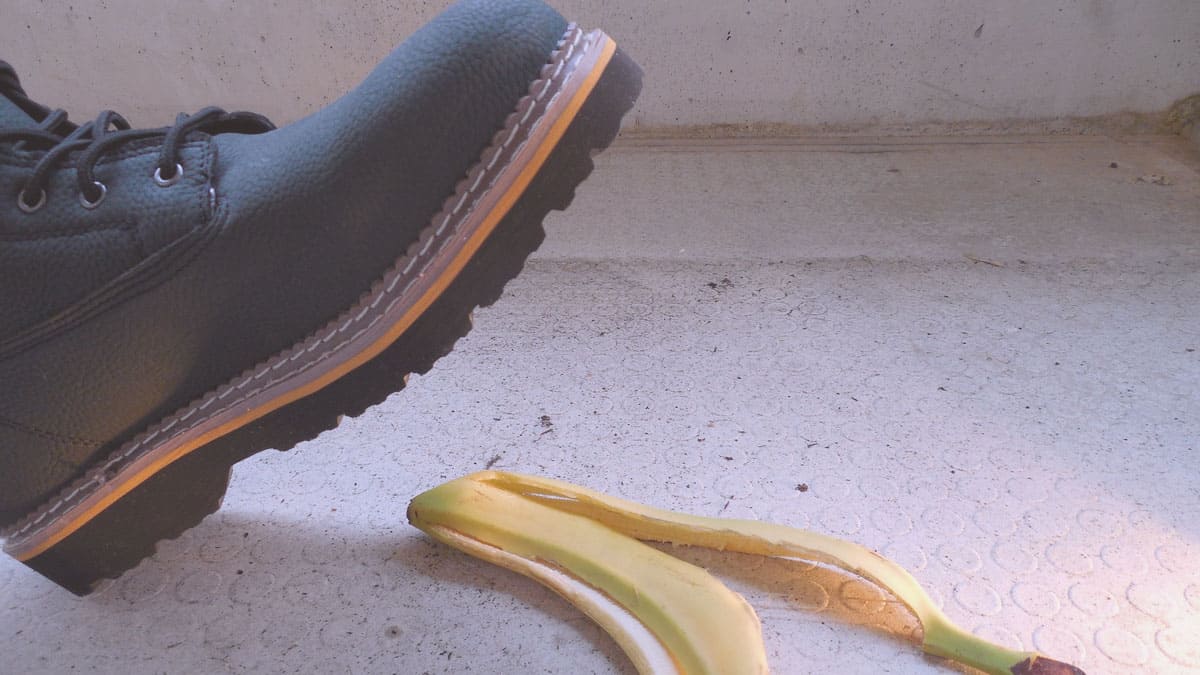Business Liability: What If Someone Gets Hurt?
Business Liability: What do you do if a customer gets injured on your property, or your products cause an injury?

We do our best to keep ourselves, our employees, and our customers safe. But accidents happen, and sometimes people get hurt. In addition to the fact that we never want to see anyone hurt, injuries that happen at your business or because of your products can seriously threaten your business. You may face expensive lawsuits or medical bills that can wipe out a big chunk of your cash. So how do you take steps to reduce your business liability?
So, what do you do if a customer gets injured on your property, an employee gets injured on the job, or your products cause an injury?
You Need Business Liability Insurance
As always, an ounce of prevention is worth a pound of cure. In the world of business liability, that means having general liability insurance.
Just as car insurance protects you in the event of an auto accident, general liability insurance is coverage which can protect you from a variety of personal injury claims. General liability insurance can protect your business from personal injury claims that occur at your shop or business location.
General liability insurance is relatively affordable. Annual premiums start at less than one thousand dollars and go up from there, depending on the amount of coverage you seek and the nature of your business. For more information on how to find the right coverage for you, visit the SBA Government General Business Liability Insurance link.
If you’re selling a product, you’re also exposed to liability for injuries caused by your product. If your product is inherently dangerous, doesn’t come with the proper warnings, or has a manufacturing defect that makes it hazardous, an injured customer can sue you and claim compensation for their medical bills and other expenses. Talk to your insurer about how to cover that kind of liability.
Finally, you’ll need to get workers’ compensation insurance. That will pay employees that get injured on the job while they recover or, in serious cases, for an extended period of time.
What to Do When an Employee Gets Hurt
Your employees may be using heavy equipment, working around dangerous chemicals or materials, or sitting at a desk – they can get hurt in any of those places. Equipment malfunctions, chemicals spill, and people can get hurt just slipping on a patch of ice or burning themselves on the office coffeemaker.
Sometimes an accident is just an accident, and there’s no liability. But if your employee was injured because you failed to address a dangerous condition, then you may be liable.
Make sure you talk to your employees about the process for dealing with workplace injuries. Encourage them to report injuries immediately and make sure they understand how injuries should be handled.
Here’s what you need to do if an employee gets hurt at work:
Step One: Get Immediate Medical Attention
When an employee is injured during their time at work, the steps you take in the first hours and days following the injury are crucial to protecting yourself from liability. Obviously, the first step when any person – employee, contractor, or customer – is injured at your place of business is to seek medical care. One of the easiest ways to get yourself in trouble with the law is to fail to seek proper medical treatment for any employee or customer who’s injured on the premises.
Always err on the side of caution when assessing medical situations. It may not be immediately obvious when the medical condition is an emergency. In some instances, such as anaphylaxis, bleeding, or trauma, minutes matter, so don’t hesitate to seek help ASAP.
If the condition is clearly minor, such as a small cut or abrasion, then the best thing you can do is encourage the employee or customer to follow up about their injury using their health care provider. When in doubt, call 911.
The worst thing you can do is ignore the problem. Make sure the injured party gets the treatment they need as soon as possible.
Step Two: Report a Claim
If your employee is injured on the job, then you have to take steps to ensure that they have the proper information they need to file a workers’ compensation claim. You need to provide your injured employee with a claim form as soon as you learn about the injury. The next step is reporting the injury to the workers’ compensation insurance company.
After you’ve reported the claim to workers’ comp, you’ll want to conduct your own internal investigation on the injury. First, you should speak to the injured employee to find out what happened. This is important for two reasons: 1) to assess the nature of the incident and 2) to determine if there is an existing condition at work that may be dangerous to other employees.
Second, you should speak to any parties that saw the injury and review any photos or videos of the incident. You’ll need a clear idea of what happened in order to defend yourself in case of a claim. This can also help you correct any dangerous conditions that could pose a threat to other people on the premises.
Step Three: File the Employer’s Report of the Accident
Employers are required to complete an Employer’s Report of Accident when a worker is injured at their place of business. This report allows you, the employer, to flesh out details of the incident, add your side of the story, and submit any evidence such as photos, witness statements, or video.
Once this claim form has been completed, it will be given to a claims administrator to process the matter as relates to workers’ compensation. It is up to the claims worker to assess whether workers’ compensation will be awarded to the injured party.
One mistake that some employers make after filing the Employer’s Report of Accident is that they fail to stay on top of the claim. Reviewing the claim and processing the claim may take up to ninety (90) days. After the 90 day period, the claims administrator should have made a decision as to whether to accept or deny the employee’s claim. It’s your job to monitor the process of the claim, and add additional information or follow-up as needed to ensure it moves smoothly through the processing phase.
Facing a Lawsuit
When an employee accepts workers’ compensation, they give up the right to file a lawsuit against your company. However, they don’t have to accept workers’ comp. They may decide to file a lawsuit because they believe they’ll get more compensation that way. You’ll need to work with your general liability insurer to decide how best to manage the claim. You may decide to settle out of court or you may end up taking it all the way to trial.
What to Do When A Customer Gets Hurt at Your Place of Business
As we mentioned above, sometimes an accident is just an accident and you’re not liable. But you are liable if the injury is caused by your negligence – your failure to protect them from foreseeable harm. For example, say you know that your front entrance tends to form a slick sheet of ice in the winter. You know that’s a hazard htat could hurt your customers. If you salt it (and maybe even put up a sign warning people), you’re doing what you should be to protect your customers. If you ignore it, you may be negligent and face liability.
When a customer is injured at your place of business, the first step is the same: make sure the injured customer gets necessary medical attention immediately. After that, the process is slightly different.
Step One: Inspect the Area Where the Accident Occurred
Check out the scene of the accident. Is there snow or ice, faulty flooring, a snag on the carpet, a sharp piece of glass? Look at the area and document what you see, both in writing and in photos. Your visual evidence can help you defend against a court claim and help you correct any dangerous conditions in order to protect your other employees or customers.
If there is a dangerous condition, you should take immediate action to cordon off the area or otherwise keep people away from it.
Step Two: Follow Your Company Protocol
You should have a system in place for dealing with injuries that happen on your premises. That should include collecting as much evidence as possible (like witness statements). That will also include taking a report from the customer and notifying your insurer. From there, the insurer will generally take the lead in contacting the customer and dealing with their claim.
Remember that a customer may choose to file a lawsuit rather than deal with insurance, at which point you’ll need to work with your insurer and attorneys to handle the matter.
What to Do When A Customer Is Injured By Your Product
If your product is inherently dangerous, has a hazardous manufacturing defect, or lacks the proper warning labels, it could injure customers. And you could be liable. But these injuries generally don’t happen on your premises, so you may not hear about them right away. The injured customer may report the issue to you directly or you may hear about it through their attorneys.
First, you’ll need to contact your attorneys and follow their advice. You should also investigate the matter immediately. Check out your products and, if need be, take them off the shelves or recall them to protect other customers from getting hurt.
From there, it’s generally in the hands of the attorneys and insurers.
Protect Your Employees, Your Customers, and Your Business
Accidents WILL happen, so it’s up to know what to do when an accident occurs. Whether the injured party is your employee or a customer, taking the right steps after an accident will help minimize your liability as a business owner.









